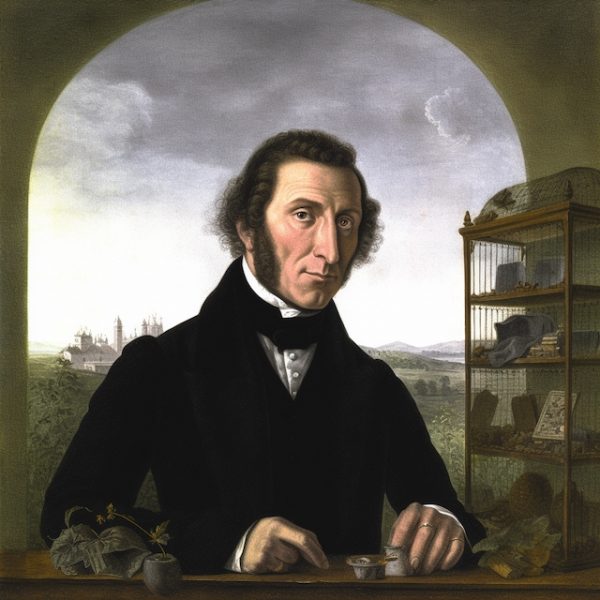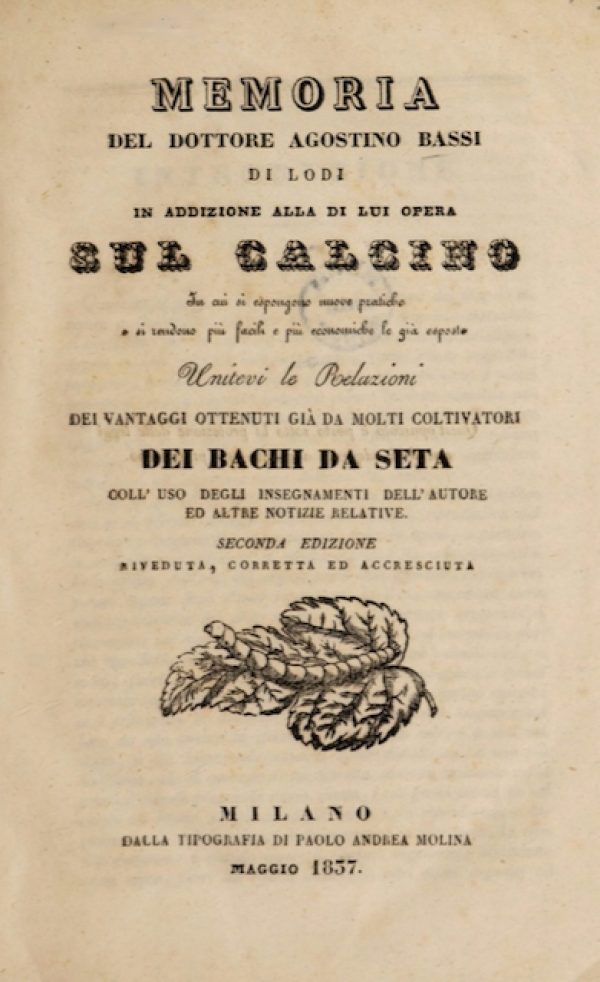The Pioneering Scientist Who Explained Contagious Disease
The Wall Street Journal , September 21, 2023

September 25 marks the 250th anniversary of the birth of the most important scientist you’ve never heard of. His name was Agostino Bassi, and he was the first person to identify the specific microorganism that caused a contagious disease—the first to prove the germ theory of disease. How he did it is a remarkable story of scientific passion and persistence. It deserves to be more widely known.
Bassi wasn’t meant to be a scientist. He was born into a well-to-do farming family in a small village in Lombardy in northern Italy. Following his father’s wishes, he studied law at the University of Pavia. But his first love was science. During his university years, he supplemented his official studies by informally taking courses in science, medicine and mathematics. Among the professors whose lectures he attended was Lazzaro Spallanzani, famed for his opposition to the theory of spontaneous generation. Another, with whom Bassi became friends, was Giovanni Rasori, a supporter of the then-unpopular idea that contagious diseases were caused by microorganisms.
After receiving his law degree in 1798, Bassi settled in Lodi, a town about 20 miles southeast of Milan. Plagued by recurring bouts of an eye inflammation that made reading and writing difficult, he moved in and out of bureaucratic posts. On the side, and between positions, he used the family farm as a laboratory. Over the years, he conducted experiments and published treatises on breeding sheep, cultivating potatoes, aging cheese and making wine. His most important—and time-consuming—research was on silkworms.
Lustrous, soft and easy to dye, silk has been Europe’s favorite luxury fabric as far back as ancient Rome, where it arrived from China. It comes from the cocoons of Bombyx mori, a moth domesticated in China thousands of years ago and unable to survive in the wild. By Bassi’s day, sericulture—the raising and harvesting of silkworms—was a major industry in Italy and France.
Sericulture is a precise and demanding process. Cultivators raise silkworms on trays protected from the weather and supply them with fresh mulberry leaves, the only food they will eat. Mulberry orchards are as essential to sericulture as the insects themselves. When the caterpillars are ready to build cocoons, cultivators provide them with sticks and monitor their hibernation. Just before the moths emerge, they harvest the cocoons and heat them to kill the insects before they can break the precious silk. Each intact cocoon is a continuous filament that can be reeled off, combined with others and turned into fine thread. Each sericulture stage requires precision: just the right density of silkworms and leaves, just the right temperatures, just the right timing. Disease can devastate a harvest.
In late 1807, Bassi embarked on what turned out to be 30 years of experiments aimed at identifying and countering the cause of a mysterious ailment that was wiping out silkworms. They would stop eating, become limp and die. Their corpses would then grow stiff, brittle and coated in white. The disease was variously known as mal del segno, muscardine or, in a nod to the white powder, calco, calcino or calcinaccio. Breeders believed that it must be caused by a toxin in the insects’ environment, and Bassi set out to figure out what that was.
His first eight years of experiments proved frustrating and apparently futile. He later wrote: “I used many different methods, subjecting the insects to the cruelest treatments, employing numerous poisons—mineral, plant and animal. I tried simple substances and compounds; irritating, corrosive and caustic; acidic and alkaline; soils and metals; solids, liquids and gases—all the most harmful substances known to be fatal to animal organisms. Everything failed. There was no chemical compound or pest that would generate this terrible disease in the silkworms.”
By 1816, Bassi was deeply discouraged. He had expended enormous effort and nearly all his money on fruitless studies. He was losing his eyesight. “Oppressed by a great melancholy,” he abandoned his research. But a year later, he rallied and resolved to “defy misfortune, turning to interrogate nature in new ways with the firm resolution of never abandoning her until she responded sincerely to my questions.”

A major clue came when Bassi observed that silkworms raised in the same conditions and fed the same food but housed in adjacent rooms had different outcomes. The disease would sweep through one room while its neighbor suffered little or no damage. The difference, he concluded, was that “there was no calcino germ, or very few, in one room and large numbers in the other. The mal del segno or muscadine is never born spontaneously” in reaction to a toxin, as everyone had previously believed.
After more experiments, Bassi realized that living insects wouldn’t infect one another. Rather, the disease was carried by the corpses’ white coating. Introduced into the body of a living insect, whether caterpillar, pupa or moth, the powder would multiply inside, feeding on the insect’s body until it killed it. Only then would it spread. Bassi concluded that the invader was a fungus and the white substance its spores. It was the first experimental proof that a contagious disease would spread as microorganisms traveled from an infected to an uninfected animal.
By placing a dead insect in a warm, humid environment, Bassi found he could cultivate the fungus enough to detect hints of stems with the naked eye. Under a simple microscope, he could see the curves that marked the invader as a living organism rather than a crystal.
Having determined the culprit, Bassi experimented with ways of killing the fungi without harming the silkworms, identifying several effective disinfectants. He advised sanitary measures that included treating all silkworm eggs with disinfecting solutions; boiling instruments; disinfecting trays, tables and workers’ clothing; and requiring everyone tending the silkworms to wash their hands with disinfectants.
As these hospital-style measures suggest, Bassi’s discovery was a breakthrough with implications beyond sericulture. His research anticipated the more famous work of Louis Pasteur and Robert Koch in developing the germ theory of disease. Nine years after Bassi’s death in 1856, the well-funded, publicity-savvy Pasteur turned his own attention to silkworms, conducting his first research on animals. Among the resources he had at his disposal were French translations of Bassi’s work. The provincial lawyer was a scientist ahead of his time.